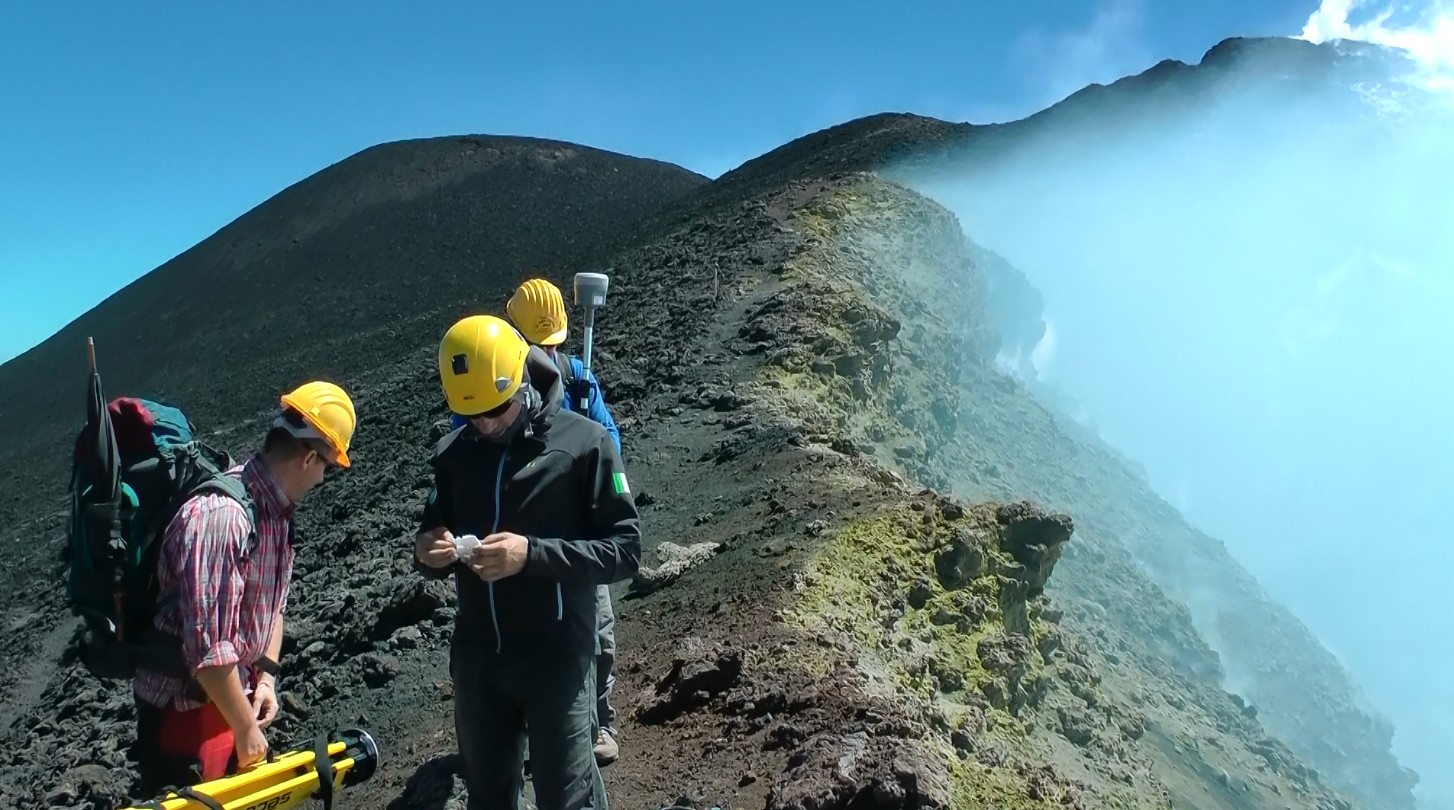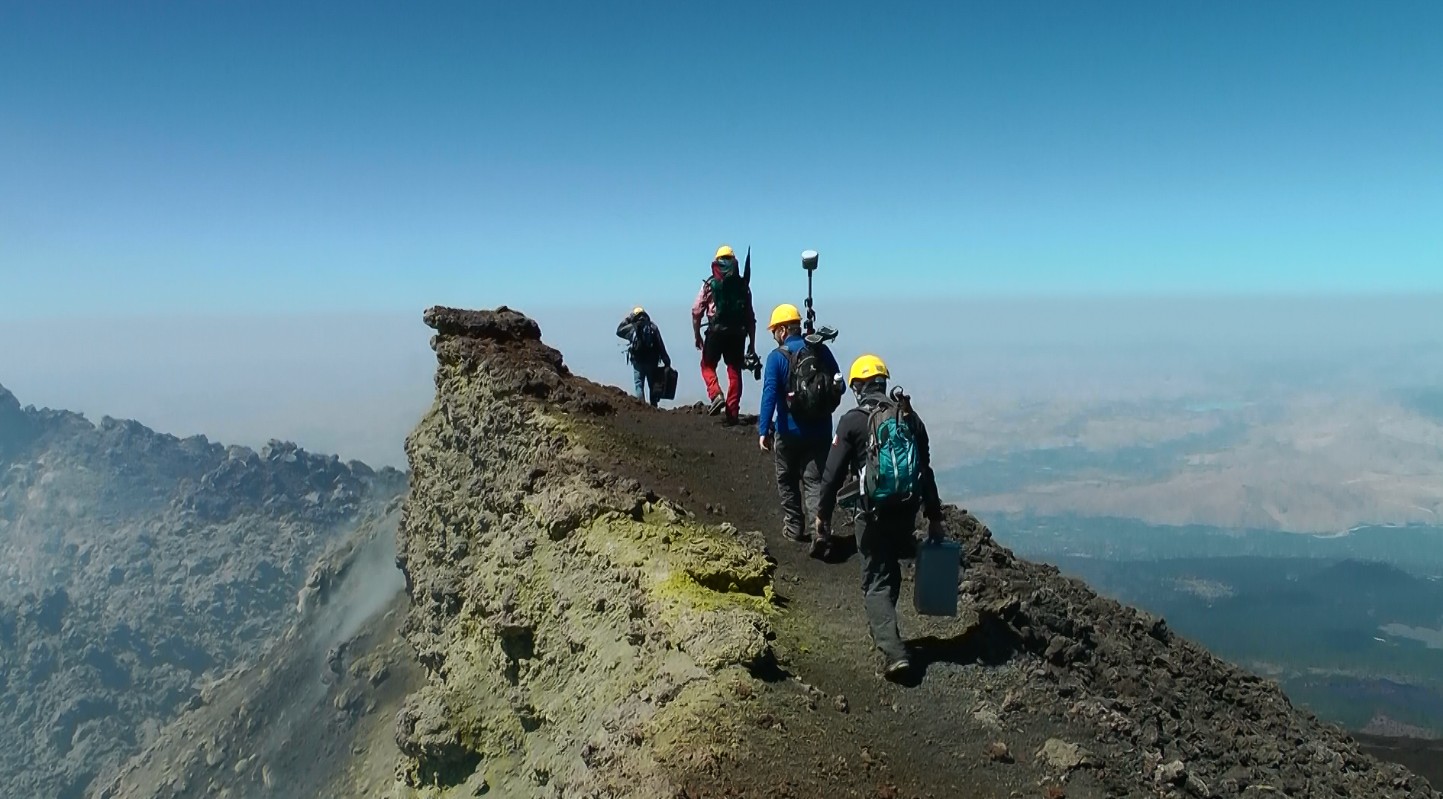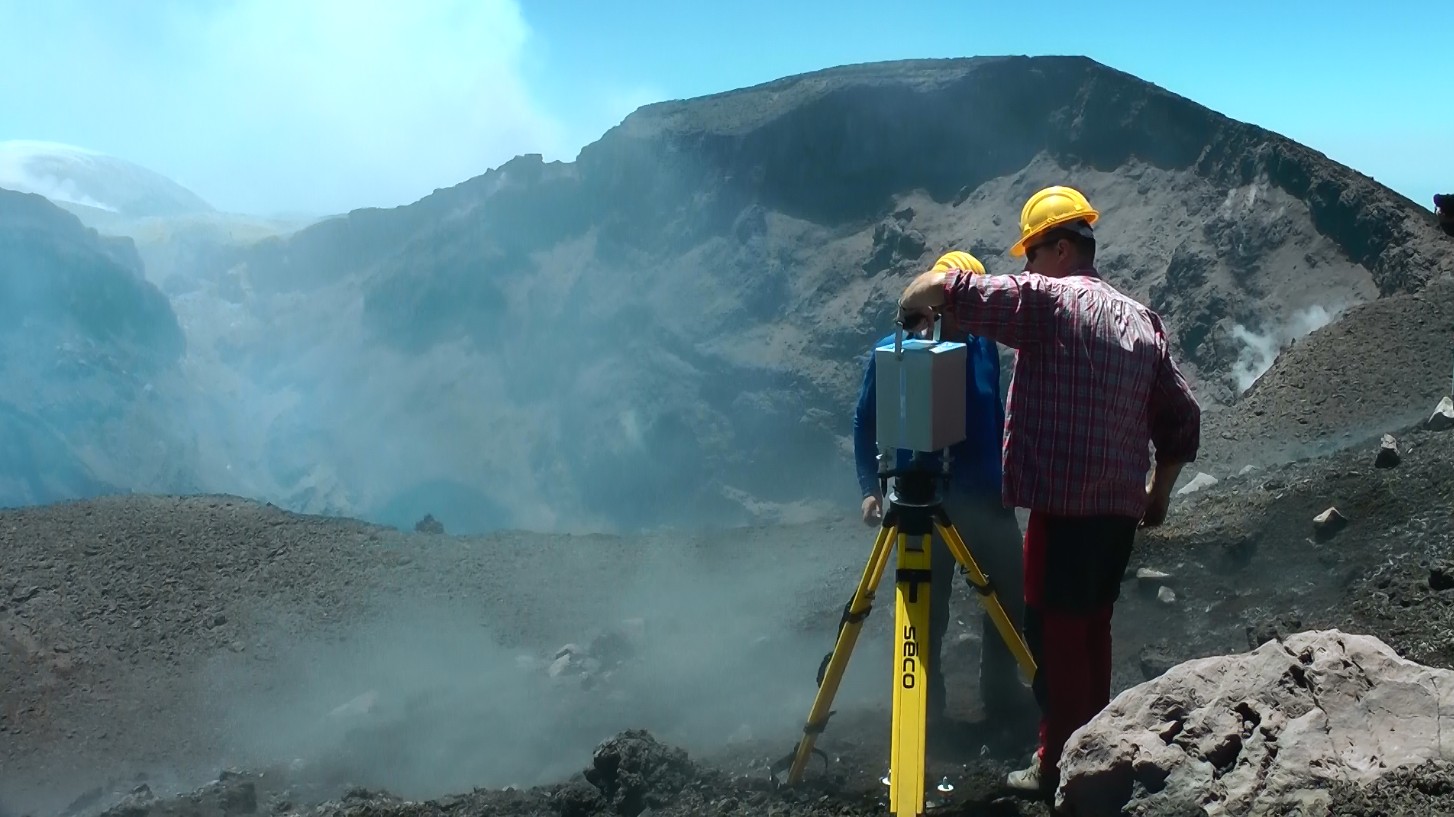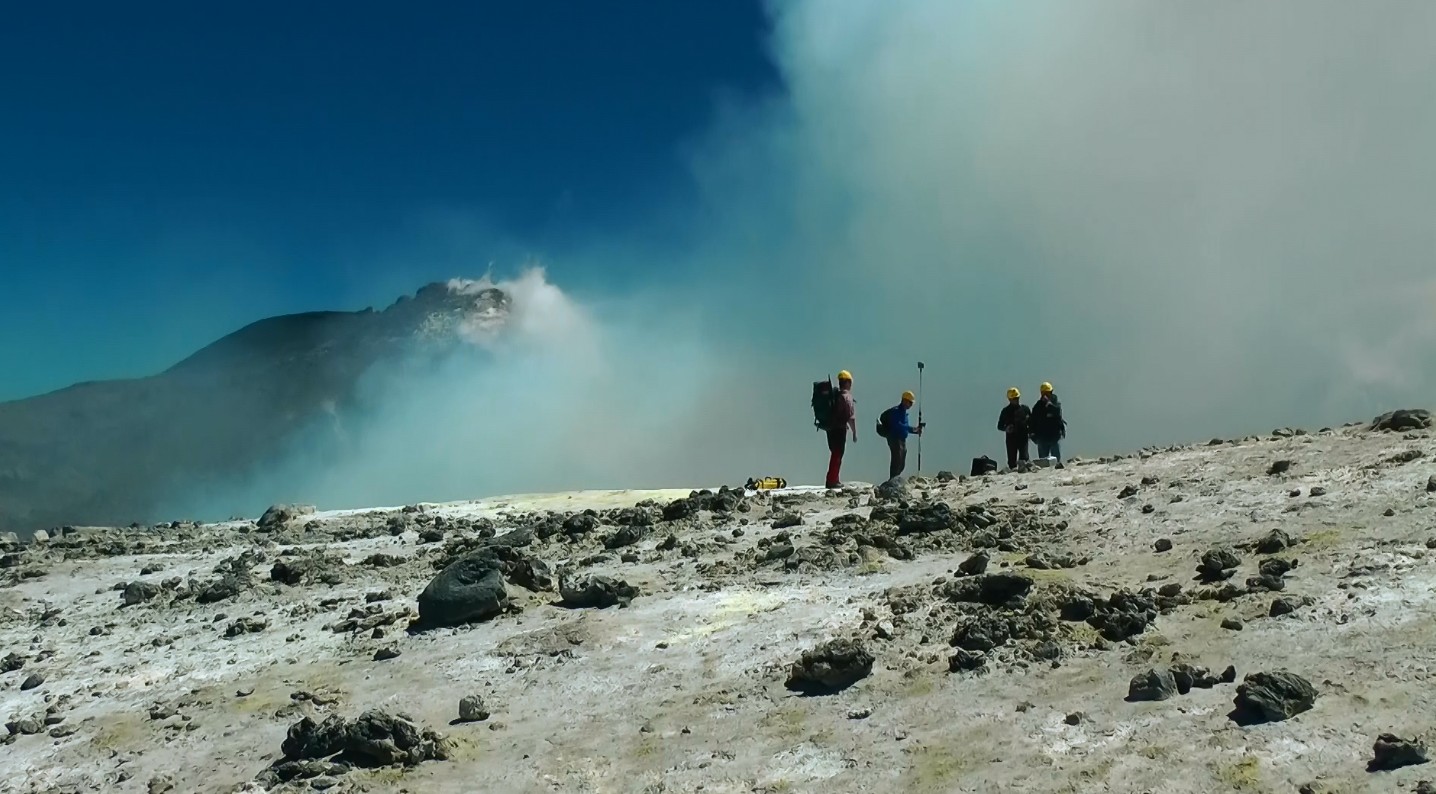Earth scientists from Slovakia, Pavol Zahorec and Peter Vajda of the department of gravimetry and geodynamics of the ESI SAS and Juraj Papčo of the department of theoretical geodesy of the Slovak University of Technology in Bratislava have teamed up with colleagues from Osservatorio Etneo, Instituto Nazionale di Geofisica e Vulkanologia (INGV) in Catania, Sicilia, Daniele Carbone, Filippo Greco, and Massimo Cantarero to conduct in July a one week campaign of field work devoted to volcano gravimetric measurements. The objective of this effort was to verify in–situ the newly developed methodology devoted to treating deformation–induced gravimetric effects in interpretation of spatio-temporal gravity changes observed and interpreted in volcanic areas that are used to learn as much as possible about magmatic and volcanic processes and to predict volcanic hazard and mitigate damages caused by eruptions or volcanic unrest. A curious by–product of our observations was the determination of the current elevation of Etna, which is a quantity changing in time due to eruptions, using geodetic GNSS (GPS).


At the edge of the Bocca Nuova crater in the summit area of Etna (ca 3200 m a.s.l.)
Stratovolcano Etna is the largest and highest volcano in continental Europe, belonging to the 3 most active volcanoes in the world. Although it does not belong to the most dangerous volcanoes due its mostly effusive eruptive activity, it is one of the best monitored and studied volcanoes in the world (see web resources below). Volcanologists and geophysicists have learned to recognize spatiotemporal patterns and precursors in the monitored data from extensive networks, continuous and repeat–campaign measurements that are used to gain knowledge about magmatic and volcanic processes, as well as for prediction of volcanic hazards. Part of such data are also spatio-temporal gravity changes. And this is where our research takes part.

Gravimetric measurements at the edge of the NE crater, which exhibited during the day weak strombolian activity deep inside, and occasionally threw out volcanic bombs
To interpret properly the temporal gravity changes observed in volcanic areas, the gravity signal induced by surface deformations (elevation changes) accompanying the process taking place in the guts of a volcano must be removed, so that the residual signal is due to the migration or redistribution of subsurface magma (or its volatiles) that is to be interpreted from the gravity changes. This is standardly done by removing a free-air effect based on theoretical vertical gradient of gravity and a Bouguer effect approximating the attraction of deformed topographic surface. We are proposing a new approach that should be more exact, based on a gradient effect due to a predicted true vertical gradient of gravity (VGG) and an attraction term computed based on numerical Newtonian volumetric integration. Our field work was part of the effort to verify our new approach and to prove it correct and better. For that sake we needed to demonstrate that we can successfully predict the VGG in volcanic areas of prominent rugged topography based on modelling the topographic contribution to the VGG using high resolution high accuracy digital elevation models (DEM) and eventually local improvements using drone-flown photogrammetry.

The engagement and the attractive yet demanding worksite environment in the summit craters area
Web resources about Etna and its geophysics and vulcanology:

